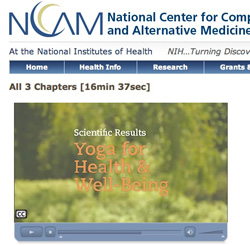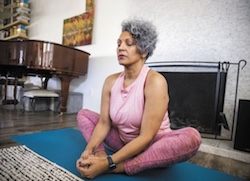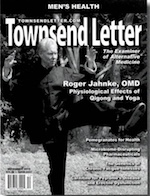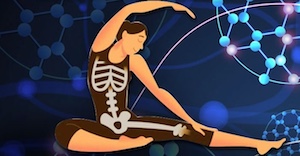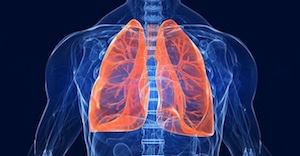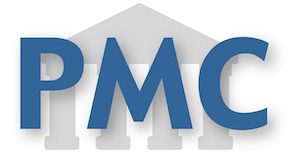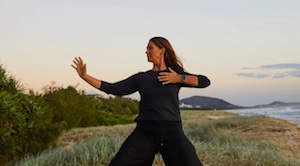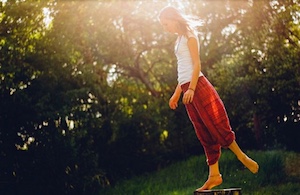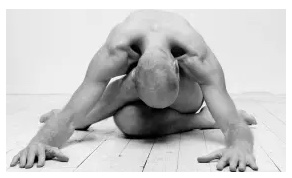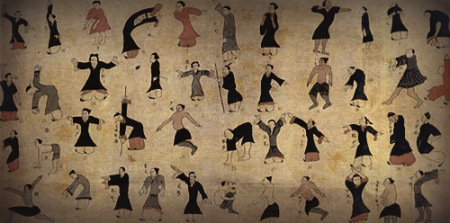Pubmed Peer-Reviewed
Yoga Research

Integrating Yoga into Comprehensive Cancer Care: Starting Somewhere. Adaptive yoga programs are well-accepted by cancer survivors and caregivers and may contribute a solution to healthcare staff and physician burnout. It is essential to build a solid foundation of self-care and wellness programming for cancer survivors and to create and foster adaptive yoga classes.
Health benefits of yoga for cancer survivors: An updated systematic review and meta-analysis. PMCID: PMC10904170.
Yoga and the Need of Its Integration in Modern Medicine. PMID: 37355975.
The effects of a complex yoga-based intervention on healthy psychological functioning. Yoga based interventions were found to have a positive impact on various indicators of psychological functioning, such as perceived stress, satisfaction with life, positive and negative affectivity. Additionally, such interventions improved bodily or interoceptive awareness and spirituality. PMCID: PMC10097994.
East Meets West in Therapeutic Approaches to the Management of Chronic Pain. Yoga as a holistic principle, not only practice of asanas or poses, integrates all aspects of the self, with biological, mental, intellectual, and spiritual elements. Yoga encompasses the biopsychosocial medical perspective, which regards pain as a dynamic interaction between physiological, psychological, and social factors. The purpose of this perspective article is to compare and contrast psychological practices such as mindfulness meditation, relaxation response (RR), and cognitive behavioral therapy (CBT) with Yoga in their management of chronic pain. The use of these practices is explored through history, literature, and research studies. Results from scientific studies on Yoga show changes in health-related pain outcomes for patients with chronic pain. The key aspects of Yoga, notably relaxation, positive thinking, and mindfulness, are discussed in relation to mindfulness meditation, RR, and CBT. PMCID: PMC9015085.
Therapeutic Efficacy of Yoga for Common Primary Care Conditions. Yoga is a relatively safe and effective option for patients interested in therapeutic lifestyle change to promote well-being and to help manage hypertension, back pain, and overall mental health. PMID: 35025177.
Meta-Analysis of the Effect of Yoga Practice on Physical Fitness in the Elderly. Yoga is a multimodal activity that improves muscle strength, balance, and flexibility in the elderly, and physical activity policies should continue to promote yoga as an activity that enhances physical and mental wellbeing in this population PMID: 34770176.
Is Weekly Frequency of Yoga Practice Sufficient? Physiological Effects of Hatha Yoga Among Healthy Novice Women. The present findings suggest that weekly setting of a 10-session long hatha yoga training leads to improvements in balance, flexibility and core muscle strength among healthy young women. However, for changes in BMI, body fat percentage, resting HR and HRV longer, and/or more intense interventions are needed.
The immediate and durable effects of yoga and physical fitness exercises on stress. Yoga intervention is better than fitness exercises in helping undergraduates cultivate mindfulness and reduce stress.
12 Weeks of Kindergarten-Based Yoga Practice Increases Visual Attention, Visual-Motor Precision and Decreases Behavior of Inattention and Hyperactivity in 5-Year-Old Children.
The effects of yoga compared to active and inactive controls on physical function and health related quality of life in older adults- systematic review and meta-analysis of randomised controlled trials. This review is the first to compare the effects of yoga with active and inactive controls in older adults not characterised by a specific clinical condition. Results indicate that yoga interventions improve multiple physical function and HRQoL outcomes in this population compared to both control conditions. This study provides robust evidence for promoting yoga in physical activity guidelines for older adults as a multimodal activity that improves aspects of fitness like strength, balance and flexibility, as well as mental wellbeing.
Yoga as effective as physical exercise for cardio-respiratory fitness.
Energy Expenditure in Vinyasa Yoga versus Walking. YOGA meets the criteria for moderate-intensity physical activity.
Yoga for Youth Program launched at UCLA School of Medicine. The Pediatric Pain Program at the University of California, Los Angeles, is a multidisciplinary treatment program designed for young people with chronic pain and their families.
10 week worksite yoga program improves flexibility, reduces stress and increases musculoskeletal fitness.
Swedish Randomized Controlled Trial finds Yoga effective in reducing stress and anxiety
Comparison of higher order spectra in heart rate signals during two techniques of meditation: Qigong and Kundalini meditation. Heart rate signals increased during Kundalini Yoga meditation, but it decreased significantly during Chi meditation. There are significant differences between rest and meditation states, but also heart rate patterns appear to be influenced by different types of meditation.
Core muscle function during specific yoga poses. This research assesses eleven yoga poses in specific training and rehabilitation programs via examination of the muscle activation patterns in selected trunk and hip muscles. Variations in core muscle firing patterns depend on the trunk and pelvic positions during these poses. Training programs can be developed by choosing particular poses to target specific core muscles for addressing low back pain and declines in performance. The High plank, Low plank and Downward facing dog poses are effective for strengthening external oblique abdominis, Chair and Warrior 1 poses for targeting gluteus maximum, and Chair and Halfway lift poses for strengthening longissimus thoracis. And these three muscles could be strengthened by the Upward facing dog pose.
Study finds positive correlations between the extent of yoga practice and meaning in life and gratitude.
Six weeks of uninterrupted medical yoga therapy is a cost-effective early intervention for non-specific low back pain.
Harvard Medical School review recommends yoga for schools.
Yoga and Healthcare in the United Kingdom. The emergence of yoga therapy in the United Kingdom began about 45 years ago with the emergence of yoga therapy organizations that offered both treatment and training. The integration of yoga into the National Health Service (NHS) is gradually happening Because: (a) yoga research supports its efficacy as a cost-effective, preventive and complementary treatment for a host of non-communicable diseases; and (b) the escalating economic burden of long-term conditions is overwhelming the NHS. The NHS is actively developing 'sustainability and transformation plans' that include yoga.


 Trends in Yoga, Tai Chi, and Qigong Use Among US Adults, 2002-2017
Trends in Yoga, Tai Chi, and Qigong Use Among US Adults, 2002-2017
